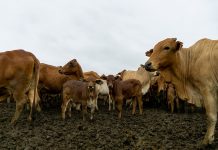By Job Okoth
With nearly two in three of Africa’s population depending on agriculture for survival, farming is more than just a job – it is life itself. Despite this, agriculture receives less than four per cent of commercial lending, resulting in small-scale farmers struggling with little access to credit, poor infrastructure, and high borrowing costs.
It is against this backdrop that Heifer International called for stronger local partnerships to transform Africa’s agriculture during the Africa Food Systems Forum 2025 in Dakar, Senegal.
According to the development agency, collaboration among governments, donors, investors, smallholder farmers, youth innovators, and cooperatives is the only way to close the massive $80 billion annual financing gap and build resilient food systems for Africa’s growing population.
“The future of African agriculture will be built on strong partnerships and funding that helps innovations move from ideas to scale,” said Surita Sandosham, President and CEO of Heifer International.
Access to affordable credit and reliable markets feels like a dream for many farmers. Commercial banks remain reluctant to invest in agriculture, citing high risks. The gap left behind is massive, and while grants and philanthropic funds help, Heifer International argues that these resources must be aligned with local realities if they are to have a real impact.
The organization notes that flexible funding gives youth-led enterprises the chance to test ideas in real farming conditions, prove their business models, and eventually attract private investors. Without this kind of support, many promising innovations remain stuck at the idea stage, never reaching the farmers who need them most.
Heifer’s approach is not just theory. Through its AYuTe NextGen initiative (Agriculture, Youth, and Technology Next Generation), the organization has been supporting youth-led agritech start-ups across the continent. In Nigeria, a partnership with Hello Tractor has provided more than 20,000 smallholder farmers with affordable mechanization services, helping them plant and harvest on time.
In Uganda, young innovators supported under AYuTe have created mobile-based livestock health and crop advisory services that are already attracting private investors. Meanwhile, in Kenya and Rwanda, partnerships with dairy cooperatives have reduced milk spoilage by as much as 30%, improving farmer incomes and making dairy more attractive to processors.
These examples show that when farmers, governments, and innovators work side by side, agriculture can shift from a struggle for survival to a pathway for prosperity.
Speaking at the forum, Adesuwa Ifedi, Heifer’s Senior Vice President for Africa Programs, made it clear that transformation begins with recognizing the role of farmers.
“Farmers must be treated as business partners, young innovators need opportunities to prove their models, and finance must be structured in ways that share risk fairly. Above all, partnerships rooted in local realities create the trust and resilience needed for long-term growth,” she said.
This approach also matters for women and young people, who form a large part of Africa’s agricultural workforce. With a median age of just 19 years, Africa is the world’s youngest continent. Women, on the other hand, make up nearly half of all agricultural workers. Yet both groups continue to face barriers to land, finance, and markets.
By linking women farmers and youth-led enterprises to cooperatives and designing more inclusive partnerships, Heifer says governments can ensure that agricultural development benefits groups that are too often left behind.
Regional strategies already recognize the need for stronger investment in agriculture. The Comprehensive Africa Agriculture Development Programme (CAADP), for instance, calls for over $100 billion in agrifood investment, with at least 30 per cent of opportunities directed to women and youth. The challenge has always been translating such commitments into practical action.
For many young Africans, agriculture is often seen as old-fashioned or unattractive. But that perception is slowly changing as young innovators discover ways to combine technology with farming.
Carolyne Mwangi, CEO of Kenya-based Kimplanter Seedlings and Nurseries and a recent AYuTe NextGen winner, emphasised the importance of partnerships that connect entrepreneurs to markets.
“Across Africa, young entrepreneurs are delivering solutions, from mechanisation services to cold-chain logistics. What they need are partners who understand farming realities and who can connect them to markets. This is how resilience and growth are built,” she said.
Her words highlight a simple truth: Africa’s agricultural future depends on creating space for young people to innovate, fail, try again, and eventually succeed.
Heifer International concluded that lasting change in African agriculture requires moving beyond fragmented, short-term projects to systems that bring together farmers, governments, investors, and development partners. With stronger local partnerships and better-designed support, smallholder farmers can increase their incomes, investors can identify viable opportunities, and countries can strengthen food security as their populations grow.







